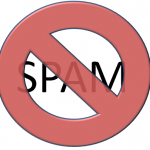For now my blog will continue to be ad free. Full disclosure: I’ve had two offers in the last month to expose my visitors to ads. The presumption is that I would make some (albeit small) amount of money. However, I’ve done the homework and know that the advertisers make the big bucks and not the advertisees.
Ads in all forms continue to plague the earth because some surveys consistently show that they work. The math is stark and the math simple. Someone is responding to spam email, even the icky ones. Someone is clicking on those web ads, and someone claims to be watching TV ads and even going so far as saying they are effective. Gasp! I will reluctantly agree that some ads are useful for communicating new products or features, but that doesn’t mean I have to like them.
I recently read about a survey claiming that 53% of online consumers said a TV ad had influenced them to purchase a product or service in the last twelve months. My heart nearly stopped. Yikes! Who are these people? Speaking on behalf of my own brain, it automatically shuts down within 30 milliseconds of an ad starting on TV or Hulu, or YouTube. Sometimes I can barely read a news article because my brain automatically blurs out 3/4’s of the page where presumably the evil ads are lurking.
Here’s a fact. When you watch prime time television you will be brainwashed and turned into a zombie through the constant exposure of 50 – 70 ads per hour. I’ll repeat that in case you missed it: 50 to 70 advertisements in a single hour. I can tell you this with certainty because I sat down one night and decided to convert percentage of ad time per hour into a meaningful number that anyone could understand. If you watch two TV shows back-to-back that’s possibly 100 to 140 ads that have soaked into your sleep addled brain. And, these are the actual ads and the numbers don’t include embedded product placements that are getting increasingly brazen.
After I had a grasp on the level of digital bombardment we were receiving from TV ads, I was able to take some of the full page, online, take-temporary-control-of-the-entire-browser ads with a bit more perspective. I also said a silent praise for DISH Network’s Hopper.
Maybe I’m writing this blog post because an ad told me too.
